Whenever control priest is viable, a good chunk of the players will complain about the class being successful, solely because they lack a win condition and drag out games. Enter Seek Guidance and more specifically, Purified Shard, which just wins the game on the spot. However, in order to get this literal game winning card, you have the difficult challenge of curving out perfectly up to turn 8. Is this enough of a challenge to prevent this quest from functioning or can Priest’s talent of card generation going to generate a solid home for this quest? Time for some math!
Parameters for the Statistics
Before jumping into the breakdown, I would first like to give the conditions behind a lot of the calculations you will see in this article and almost all the future ones. In every scenario, I assume the player goes first and hard mulligans everything but the questline to find the key cards to accomplish the quest, and then prioritizes completing the questline with the hypothetical opponent not applying much pressure. In addition to that, unless a percentage is stated, assume that the given scenario will happen 50% of the time. With this out of the way, let us dive into this questline!
Decklist
Quest Completion Breakdown
Before going into each step, let us first take a look at some of the RNG elements included. The main card generation we have comes in the form of Renew, Venomous Scorpid, Pandaren Importer, and finally Onyx Magescribe. Priest has a total of 34 discoverable spells, with 20% costing 2 mana, 12% costing 3 mana, 20% costing 4 mana, 6% costing 5 mana, 3% costing 6 mana, 6% costing 7 mana, and 3% costing 8 mana. While Power Word: Fortitude can cost any of those numbers, for the sake of these calculations, we are going to assume that it will never be the mana cost we want it to be. Anyway, when discovering with Renew, we can expect to find a 2 mana spell 56% of the time, a 3 mana spell 37% of the time, a 4 mana spell 64% of the time, a 5 mana spell 18% of the time,a 6 mana spell 9% of the time, a 7 mana spell 18% of the time, and finally an 8 cost spell 9% of the time. Fortunately, the math will almost be the exact same for Venomous Scorpid, with the only difference being that we will find a 2 mana spell 64% of the time since it can discover Renew. As for Pandaren Importer, we can expect to get a 2 mana spell 53% of the time, a 3 mana spell 43% of the time, a 4 mana spell 64% of the time, a 5 mana spell 21% of the time, a 6 mana spell 11% of the time, a 7 mana spell 21% of the time, and finally an 8 mana spell 11% of the time. This leaves us with our last bit of card generation in Onyx Magescribe. It has a 36% chance to get a 2 mana spell, 23% for a 3 mana spell, 36% for a 4 mana spell, 12% for a 5 mana spell, 6% for a 6 mana spell, 12% for a 7 mana spell, and finally, 6% for an 8 mana spell. With all of these calculations out of the way, time lets us figure out those quest step completions.
Given that the questline wants us to curve out, let us first calculate the chances we hit the 2-3-4 curve. By turn 2, we have a 61% chance to have a 2 drop, turn 3 we have a 70% chance to have a 3 drop, and by turn 4, we have a 70% chance to have 4 drop. If these numbers look too good to be true, that is because it is. Once we combine the chances to hit these three in a row, the odds look considerably worse, being a frankly horrible 30% chance to curve out properly. In order for this chance to reach an average chance of completing this step, it would take to turn 5. Depending on which ones we first, we can expect to be done with the first part of the questline on turn 5-6.
With the first step done, we get the option to discover a card from our deck. Assuming we have not drawn a 5-6 drop yet, we have a 41% chance to discover either a 5 or a 6 drop. To find the missing piece for this step, we expect to have found one by turn 7. This means that if we do get lucky with finding one of the needed cards from the discover, we can expect to complete this step by 7-8, giving us time to play both the cards. However, once again the odds take a nosedive when we miss on both. The average turn we draw one of each is turn 11, meaning that we can be expected to play them on turn 11-12, assuming we have not discovered anything off our card generation.
Finally, we get to the last step of playing a 7 and 8 drop. Off the discover, we have a 32% chance to find either of them, assuming we draw neither of them. If we were to hit off the discover, we have a 72% chance to have either the 7 or 8 drop in hand by turn 12, resulting in completing the quest on turn 13-14. Luckily, by this point in the game, we are also likely to have drawn both a 7 and 8 drop naturally, meaning that we can expect to be done both ways by around turn 13-14.
Reward
Xyrella, the Sanctified is a very interesting quest reward. Compared to other quest rewards, she has significantly less of an impact on board, though taunt certainly helps, but this is relatively fine due to shuffling the Purified Shard into the deck when played. While there are numerous ways to cheat the spell out of the deck, whether it be through cards like Primordial Protector, High Abbess Alura, and Lorekeeper Polkelt, these all come with either a fair bit of clunkiness or deck building cost. In order to figure out how likely it is to draw your Purified Shard after you shuffled it in, you can use the formula 1-((x-1)*(x-2)*(x-3)...)/(x*(x-1)*(x-2)...), where x is the number of cards in your deck. For this given deck, we can expect to draw the Purified Shard by turn 18-19. It should come to no surprise that this type of reward is slow, but taking that many turns to win the game is a bit steep. Accounting for running one of the aforementioned Purified Shard tutors, the actual retrieval of the spell becomes better at the cost of taking longer to solve the actual quest, though there is almost certainly a mathematically correct number of them to run. Even accounting good luck with discovers, this will only lower the expected turns to play the Shard to around 15-17, depending on how many you hit. While the version I have been running the numbers through is absolutely not the best list for completing, there is only so much you can do to help a deck that requires you to curve out essentially perfectly.
What do you think of the Priest Questline? Working through the math on this one just became increasingly more depressing as it became more clear how slow the quest is. As one might be able to tell from the fact I've been doing the math behind all the questlines, I love the mechanic and want to see it do well, but I just don't see a home or a meta where this card can truly excel. The math on this one got quite messy, so once again, if you have any questions about the math behind any of the numbers shown in the article, let me know and I can explain it a bit further. Hope you enjoyed and I'll see you all in the next one!
Learn More About Stormwind's Other Questlines
We have a whole series of articles planned for the questlines. Here's everything published so far:
- Demon Hunter's Final Showdown Legendary Questline
- Druid's Lost in the Park Legendary Questline
- Hunter's Defend the Dwarven District Legendary Questline
- Mage's Sorcerer's Gambit Legendary Questline
- Paladin's Rise to the Occasion Legendary Questline
- Priest's Seek Guidance Legendary Questline
- Rogue's Find the Imposter Legendary Questline
- Shaman's Command the Elements Legendary Questline
- Warlock's The Demon Seed Legendary Questline
- Warrior's Raid the Docks Legendary Questline

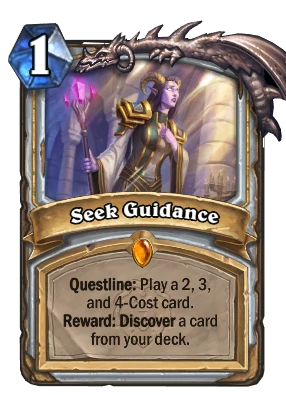
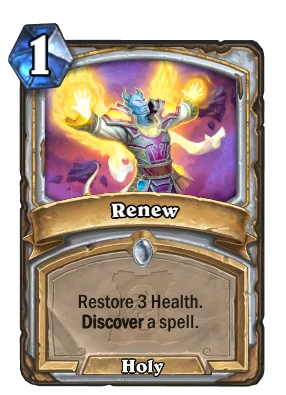

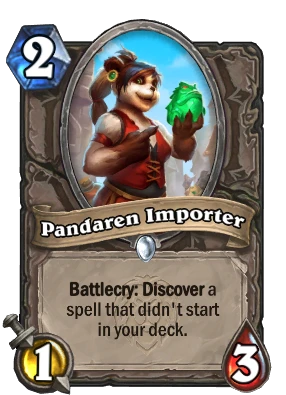
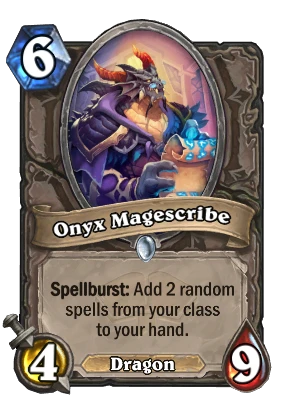
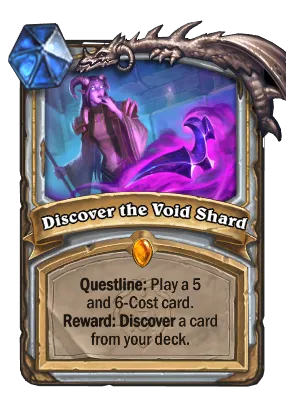
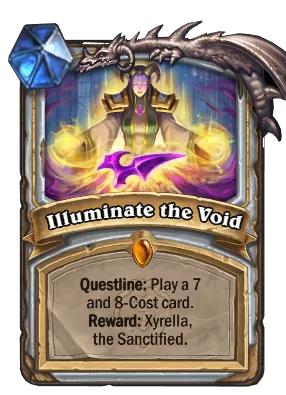
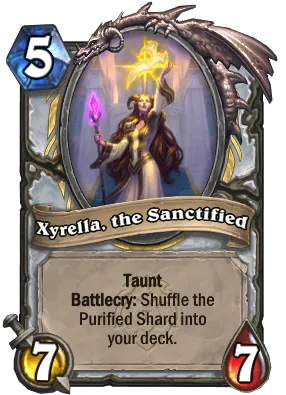
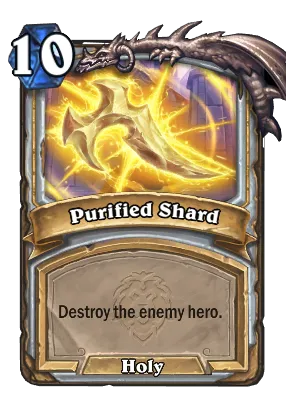
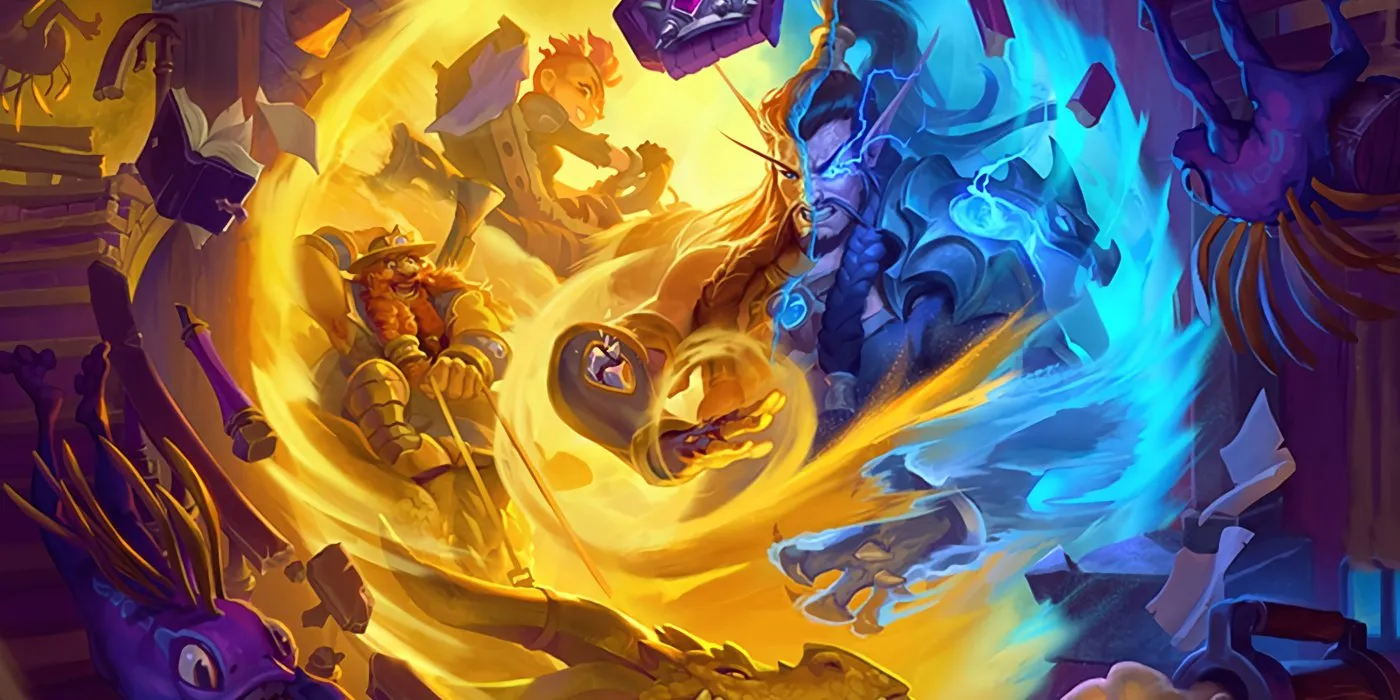
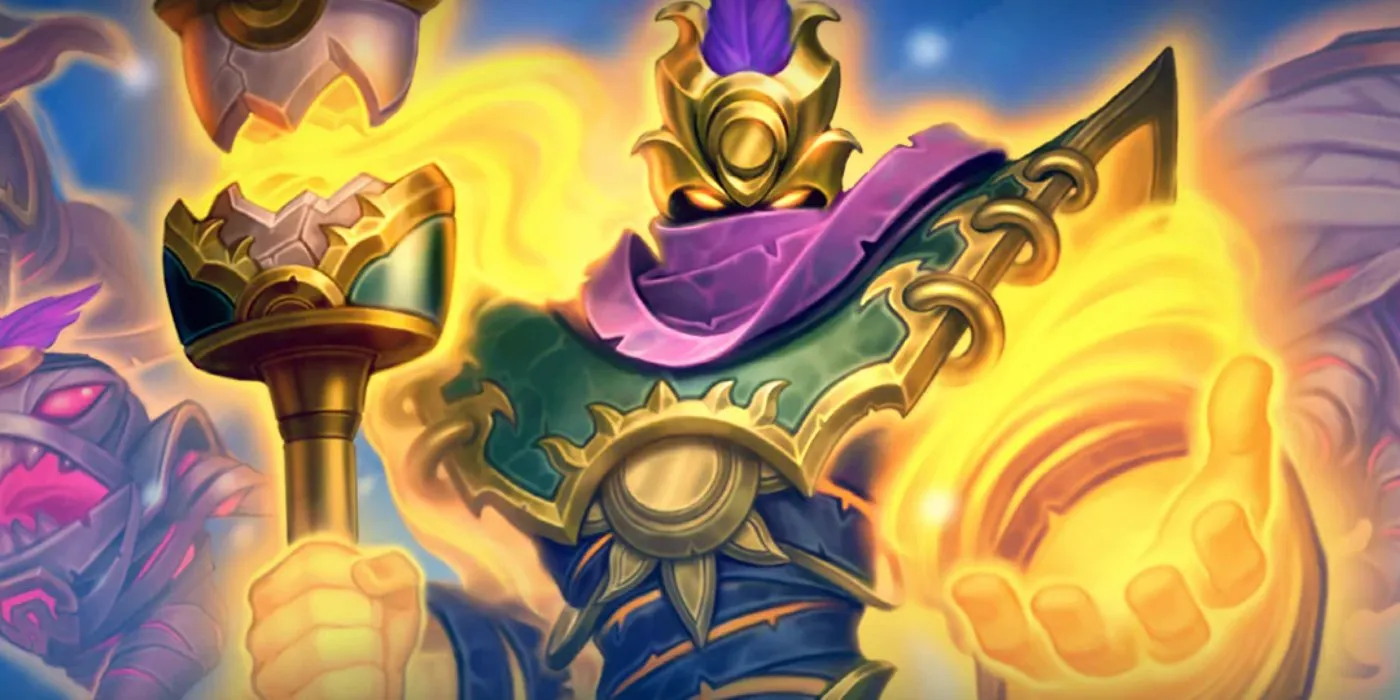
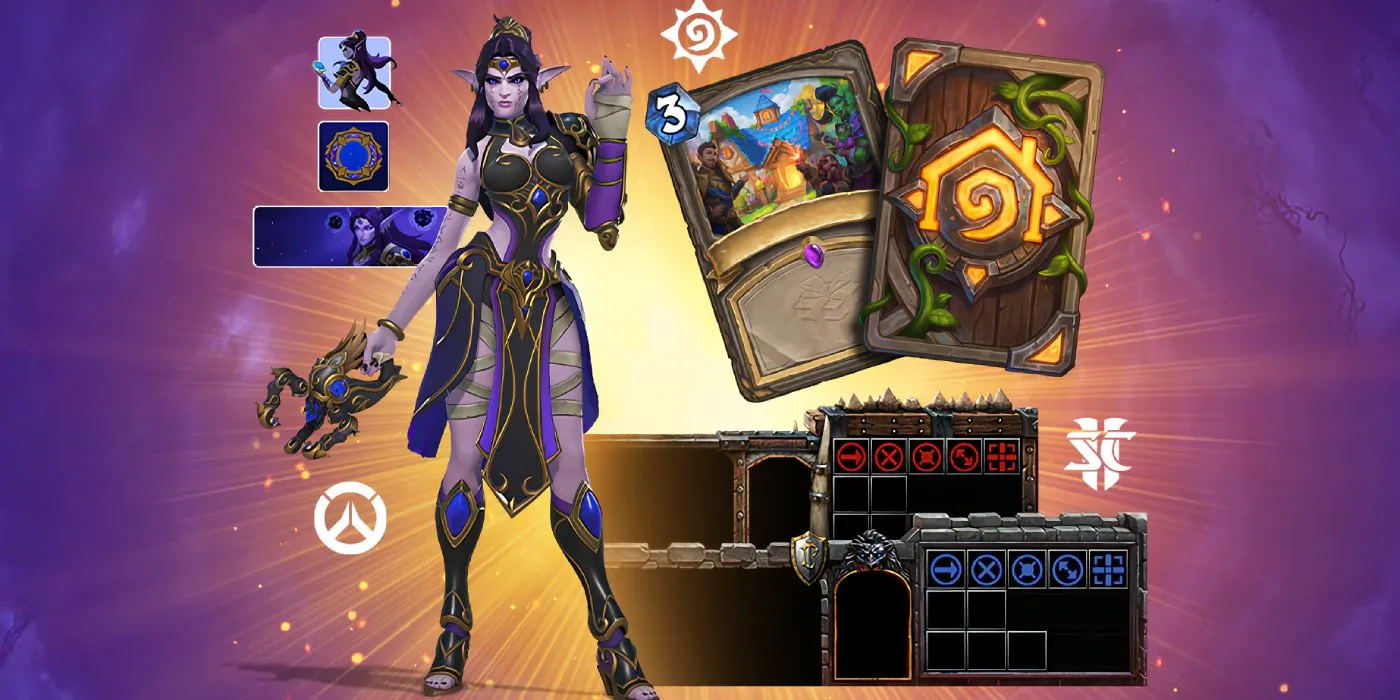
Comments
Do these calculations care which order you play cards to complete the steps? While not ideal, if it's turn 3, for example, and you haven't drawn a 2-cost yet, but you have a 3-cost, I think you should be able to play it since it doesn't say you have to play the cards in order.
They do not care about the order at which the cards are played, it just matters that the right mana cost card is played on a given step.
I feel like trading could be really interesting with the quest. Either you use them to continue the early parts of the questline or you trade them to search for the more expensive cards in your deck.
Good point! Tradable cards definitely help with consistency, I'm just not a huge fan of the ones currently printed. Hopefully the mechanic becomes evergreen because I'm a diehard mtg cycling fanatic and I feel like giving more classes the ability to be versatile can lead to a very interesting meta.
I feel people are really underestimating Primordial Protector in this deck. It's a tutor for your 7 drop AND for the reward, and it fulfils one of the requirements. You'll need to go off-curve if you go this route, but I'm not sure it matters, especially since you'll rarely be at the final step exactly on 7 mana.
ghuun caught an indirect nerf when apotheosis went down, otherwise he'd be an interesting option for
Primordial Protector definitely has a lot of potential in these decks, but I feel more often than not its just too clunky for its own good. By the time you have reached the final step of the quest, usually you will have drawn the 7 drop and 8 drop already. As for tutoring for the reward, sure that certainly helps with casting the card as soon as possible, but at that point it is not really an 8 drop for the quest and it hurts the odds quite a bit. Does the flexibility still outweigh this? Probably, but I still think just better tools to stave off aggro might be more useful.
Also, encase it is not obvious, this list I was using the math with is a bit of a hot mess in terms of what is being ran. I did not have a clear idea of what this deck should be while making it and I think it shows very clearly.
I genuinely think the Quest might be a worse long term win condition than C'thun.
no way. it fetches you two cards on the way and doesn't dilute your draws. it also cannot be delayed by dumping health in board. it's a better finisher than c'thun in at least three ways.
It dilultes your draw by making you fill your deck with shit cards. At least the C'thun cards help controlling the board.
This is undoubtedly a very very slow quest. Probably not good enough or consistent enough, especially in a meta where a lot of decks just want to end the game by turn 6. But whatever, it's a win con other than "remove every threat and hit fatigue" So I can see it being run anyway.